Investigate DQ Issues
Learn how to identify and investigate data quality issues by analyzing DQ evaluation and profiling results. This page serves as a starting point, rather than a comprehensive guide, for investigating DQ issues.
What are DQ issues?
DQ issues occur when data fails to meet the data quality standards expected for its intended use.
Data quality expectations vary by data type and your use case. For some critical assets (for example, regulatory, financial, or safety-critical data), even 95% accuracy might be insufficient, while for others (for example, marketing leads, or web analytics), 80% could be acceptable.
Investigation process
DQ issues typically arise from errors in data collection, transformation, or storage processes. When investigating these issues, focus on identifying root causes so that you can address them with targeted fixes.
Follow this process to effectively investigate DQ issues:
-
Analyze DQ evaluation results:
-
Analyze DQ results by rule and attribute to identify problematic attributes.
-
Check explanations of the results to understand why records failed.
-
Analyze invalid samples to find patterns in failed records.
-
-
Analyze profiling results to understand data structure and content and to identify DQ issues.
Analyze DQ results by rule and attribute
Analyze detailed DQ results to identify and understand DQ issues:
-
Navigate to the DQ Report on the catalog item Data Quality > DQ Report tab, Detailed results widget.

-
Scan for the results with low or decreasing data quality.
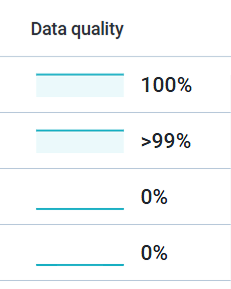
-
Check the explanations for each problematic result to understand why the records failed.

Analyze invalid samples
Invalid samples show specific records that failed the DQ evaluation. This often provides clearer insights than just reviewing the statistics.
-
From the DQ Report, select Show invalid samples.
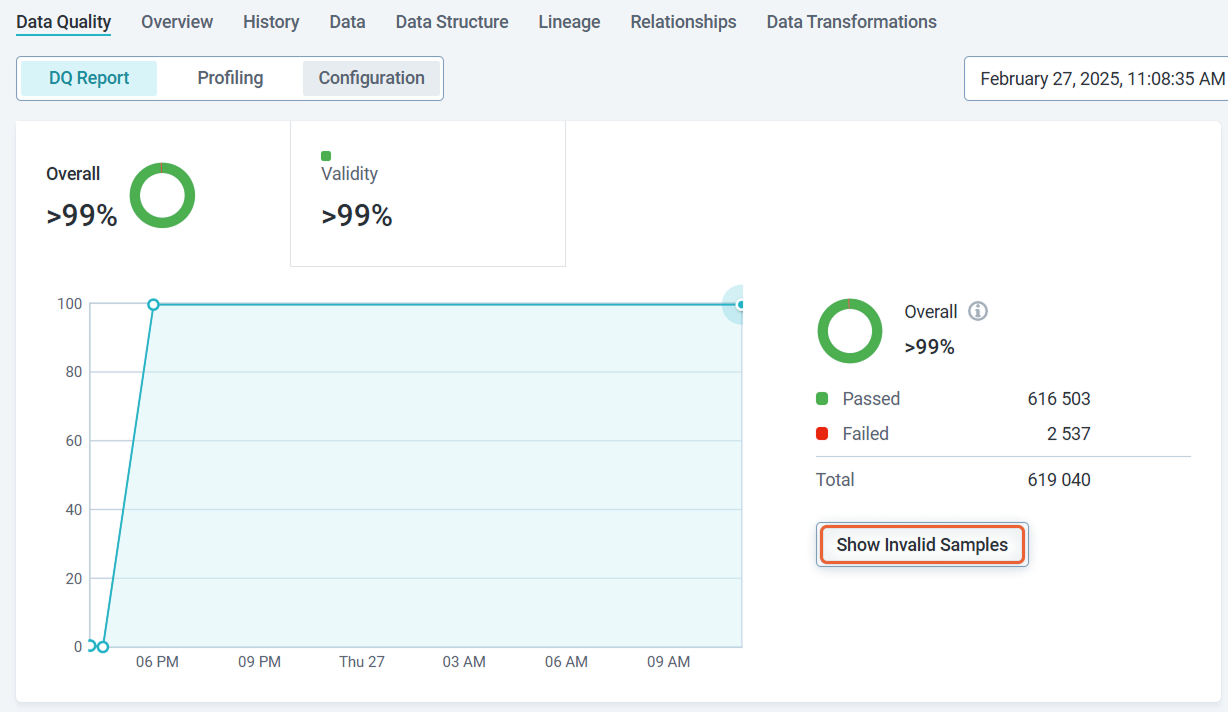
-
A list of Invalid samples opens, where you can view records that failed DQ rules.
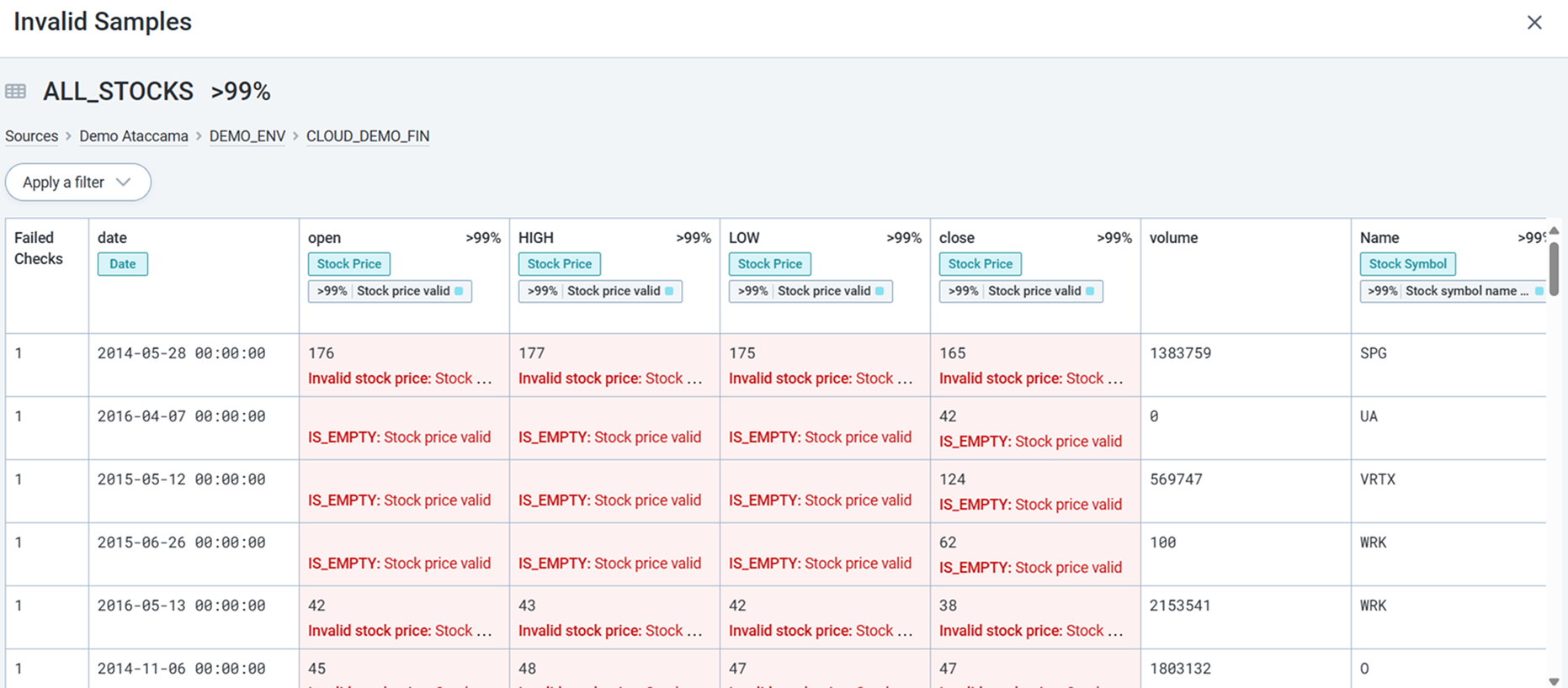
You can filter records to view invalid samples for specific rules, or to view only selected attributes.
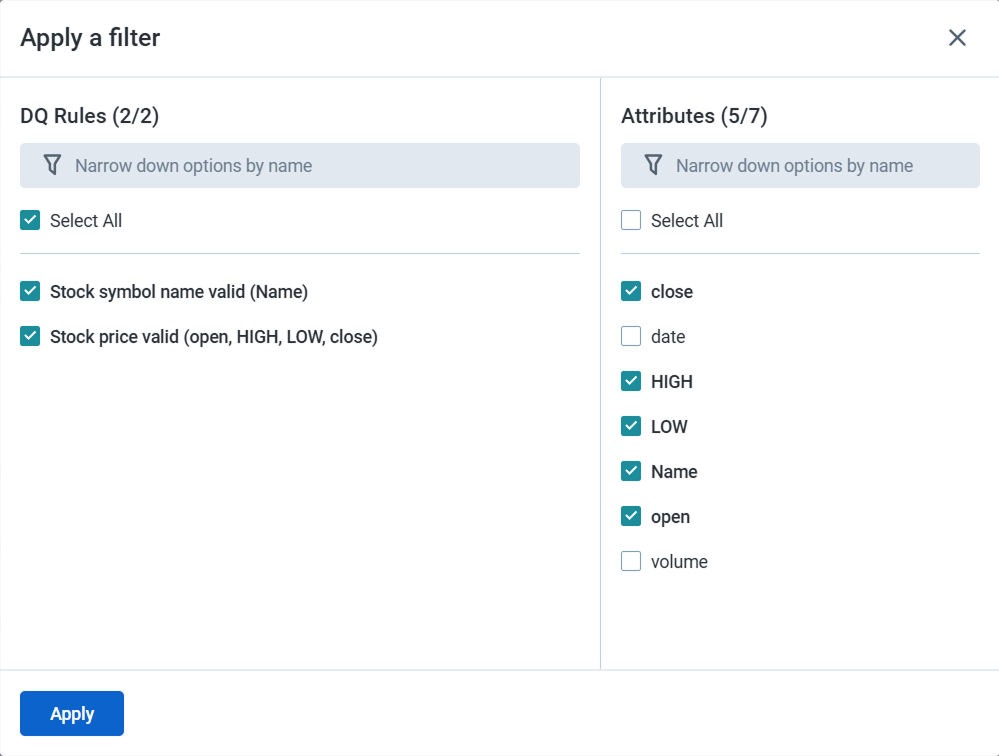
-
Search for patterns in failed records to identify common characteristics.
Examples
Some examples of common patterns and their possible causes and fixes:
-
Invalid records have a wrong format and missing values. They were filled in the same web application.
-
Possible cause: A field in an online form is not properly validated.
-
Possible fix: Add validations to the online form.
-
-
Invalid records belong to the same customer type.
-
Possible cause: If a default value is applied to the customer type field when it’s left blank or when an error occurs, all records might be assigned the same incorrect customer type.
-
Possible fix: Add validation to the entry field to ensure that the customer type field cannot be left blank.
-
-
Invalid records come from the same country.
-
Possible cause 1: The format for certain types of data (e.g., phone numbers, addresses) may differ in the country.
-
Possible fix 1: Use tools to automatically standardize or reformat data as it’s entered.
-
Possible cause 2: If the data is imported or migrated from an external system, there could be issues with how records from that specific country are mapped or parsed during the process.
-
Possible fix 2: Review the migration process and ensure that there are no errors or mismapping during the transfer of data from external systems.
-
-
Invalid records come from the same source system.
-
Possible cause: Problems with data extraction or integration from a specific system.
-
Possible fix: Review and improve how the source system handles data.
-
-
Invalid records have a specific DQ rule applied.
-
Possible root cause: An error in a DQ rule (e.g., incorrect value range) marks valid data as invalid.
-
Possible fix: Fix the DQ rule.
-
Analyze profiling results
Analyze profiling results to understand data structure and content, identify DQ issues, and investigate DQ issues identified by DQ evaluation.
You can view profiling results in one of these places:
-
Catalog item Data Quality > Profiling tab.
-
Catalog item Data Quality > Configuration tab. Select icon next to the attribute name to open the profiling results in a sidebar.
For complete details on profiling statistics, see Understand Profiling Results.
Examples
Common issues that profiling can help identify:
-
Missing values
-
Duplicate entries (for example, duplicate customer ID)
-
Inconsistent data formats (for example, date of birth appearing in the YYYY-MM-DD, MM/DD/YYYY, YYYYMMDD formats)
-
Outliers, values out of the expected range (for example, a “150-years-old” value in the age field)
How can profiling help with investigation of DQ issues:
-
Masks and patterns analysis (for example, if DQ evaluation identified an issue with a phone number format, you can check masks and patterns to see in what formats the numbers actually appear)
Analyze data quality trends
Use DQ Reports on catalog item Data Quality > DQ Reports tab to observe data quality trends over time.
Monitoring data quality over time helps you:
-
Confirm whether your fixes to improve data quality are working.
-
Detect new issues as they emerge.
-
Establish quality baselines for different types of data
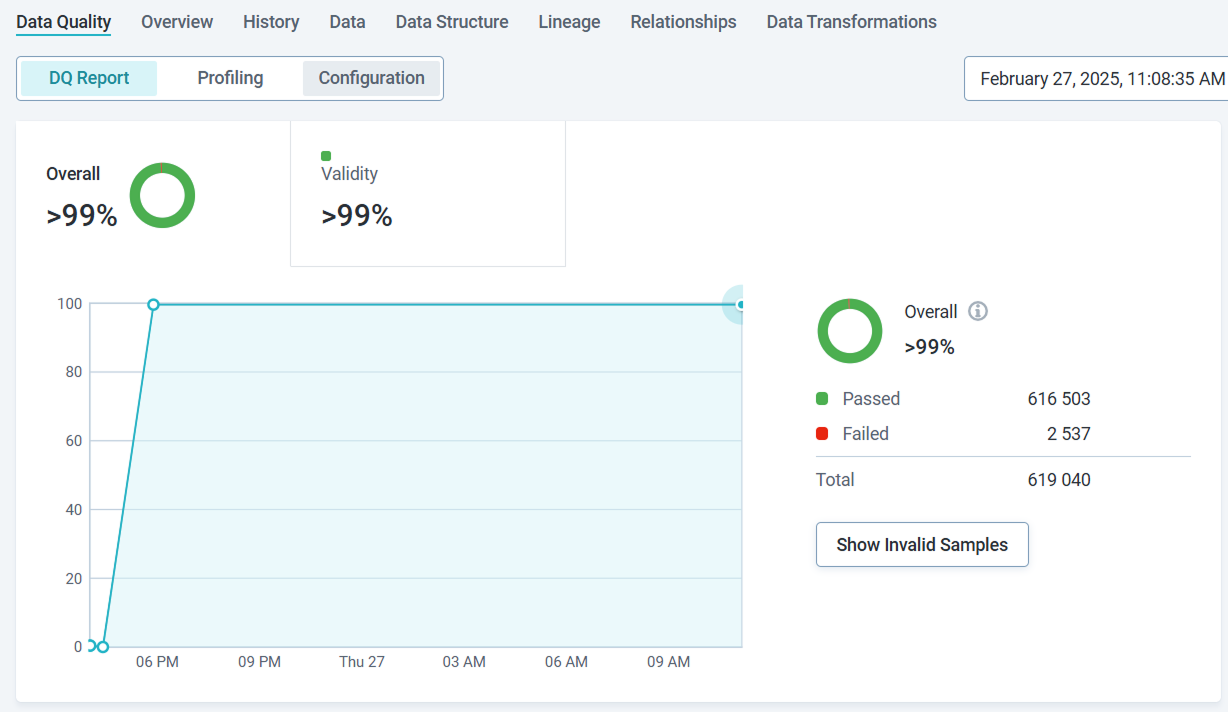
Examples
Examples of observed trends and what they may indicate:
-
Upward trend: The interventions to improve data quality are effective.
-
Sudden decline: A new source of issues was introduced into the system.
-
Recurring drops: These can be linked to specific events, such as regular system migrations. If expected, these drops do not signify a DQ issue.
-
Random fluctuations: Inconsistent data handling or varying standards in data collection across time periods.
Was this page useful?
